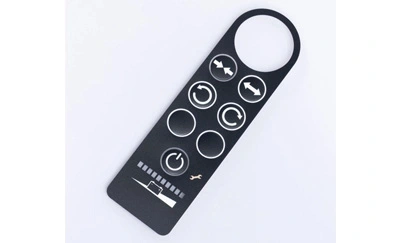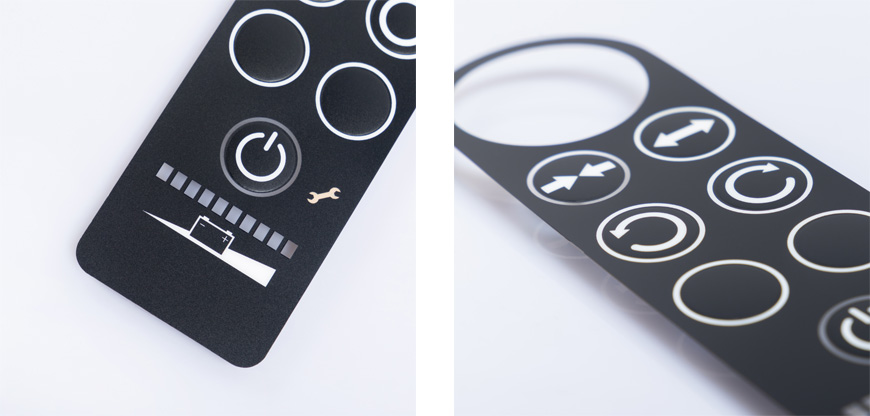
In the world of electronic devices and user interfaces, membrane switches play a crucial role. These thin, flexible, and durable components are commonly found in everything from microwave ovens and medical devices to industrial control panels and consumer electronics. In this article, we will delve into the fascinating world of membrane switch types, exploring their construction, applications, and advantages.

1. Introduction
2. What Are Membrane Switches?
The Basic Structure
Conductive Materials Used
Types of Membrane Switches
3. Applications of Membrane Switches
Consumer Electronics
Medical Devices
Industrial Control Panels
4. Advantages of Membrane Switches
Durability
Cost-Effectiveness
Customization
5. Membrane Switch Types
Tactile Membrane Switches
Non-Tactile Membrane Switches
LED-Backlit Membrane Switches
6. Choosing the Right Membrane Switch
Consideration Factors
Design Considerations
7. Manufacturing Process
8. Maintenance and Care
9. Conclusion
10. FAQs
Membrane switches are a type of interface that allow users to control electronic devices by pressing on thin, flexible layers. These switches have become integral in various industries due to their reliability and versatility.
The Basic Structure
A membrane switch typically consists of multiple layers, including graphic overlays, circuit layers, and adhesive layers. These layers work together to create a functional interface.
Conductive Materials Used
The conductive materials used in membrane switches can vary, with some utilizing silver ink, copper, or even printed circuitry.
Types of Membrane Switches
Membrane switches come in several types, each designed for specific applications. The primary types include tactile membrane switches, non-tactile membrane switches, and LED-backlit membrane switches.
Consumer Electronics
In the world of consumer electronics, membrane switches are commonly found in products like remote controls, calculators, and microwave ovens.
Medical Devices
Medical equipment often incorporates membrane switches due to their resistance to contamination and ease of cleaning, making them ideal for devices such as medical monitors and diagnostic equipment.
Industrial Control Panels
Industrial control panels rely on membrane switches for their ruggedness and ability to withstand harsh environments. They are used in machinery control and automation systems.
Durability
Membrane switches are known for their durability, with some models capable of lasting millions of actuations.
Cost-Effectiveness
Compared to traditional mechanical switches, membrane switches are cost-effective to produce, making them a popular choice in mass-produced electronic devices.
Customization
Manufacturers can easily customize the design and appearance of membrane switches, including colors, graphics, and button shapes.
Tactile Membrane Switches
Tactile membrane switches provide tactile feedback when pressed, giving the user a physical confirmation of the button press.
Non-Tactile Membrane Switches
Non-tactile membrane switches do not offer physical feedback but are known for their silent operation.
LED-Backlit Membrane Switches
LED-backlit membrane switches are designed with built-in LEDs that illuminate the keys or buttons, improving visibility in low-light conditions.
Consideration Factors
When selecting a membrane switch, factors such as application, environment, and budget should be considered.
Design Considerations
Designers should pay attention to the aesthetics and user experience when creating membrane switch interfaces.
The manufacturing process of membrane switches involves precise printing and assembly techniques, ensuring the final product meets quality standards.
Proper maintenance and cleaning practices can extend the lifespan of membrane switches, ensuring continued functionality.
Membrane switches are an integral part of modern electronic devices, offering durability, versatility, and customization options. Understanding the different types and their applications can help designers and manufacturers make informed choices.
Are membrane switches waterproof?
Membrane switches can be designed to be waterproof, depending on the materials used and the manufacturing process.
How long do membrane switches typically last?
Membrane switches can last for millions of actuations, making them highly durable.
Can membrane switches be used in outdoor applications?
Yes, membrane switches can be designed to withstand outdoor environments with proper sealing and materials.
Are LED-backlit membrane switches power-efficient?
LED-backlit membrane switches are generally energy-efficient, thanks to the low power consumption of LEDs.
Can I get a custom design for my membrane switch?
Yes, manufacturers offer customization options for membrane switches, allowing you to create a unique design.